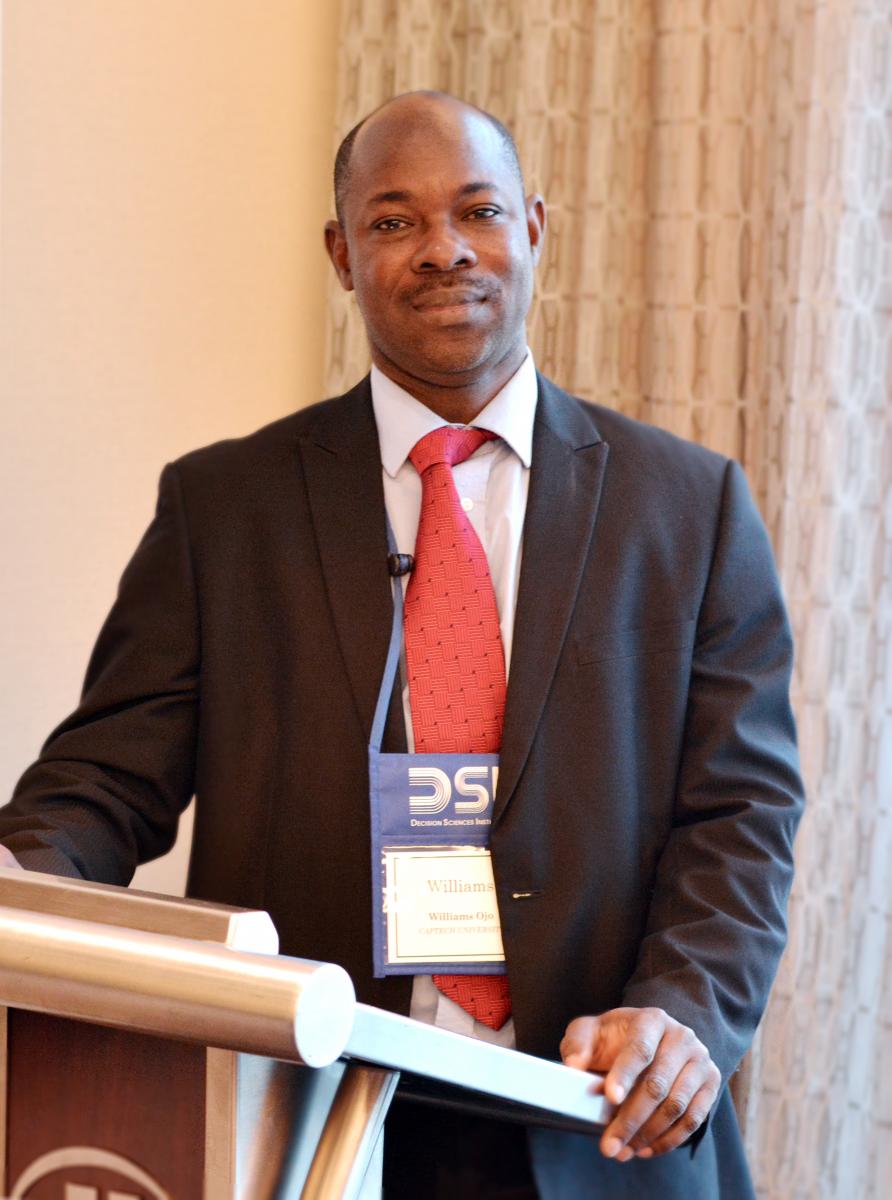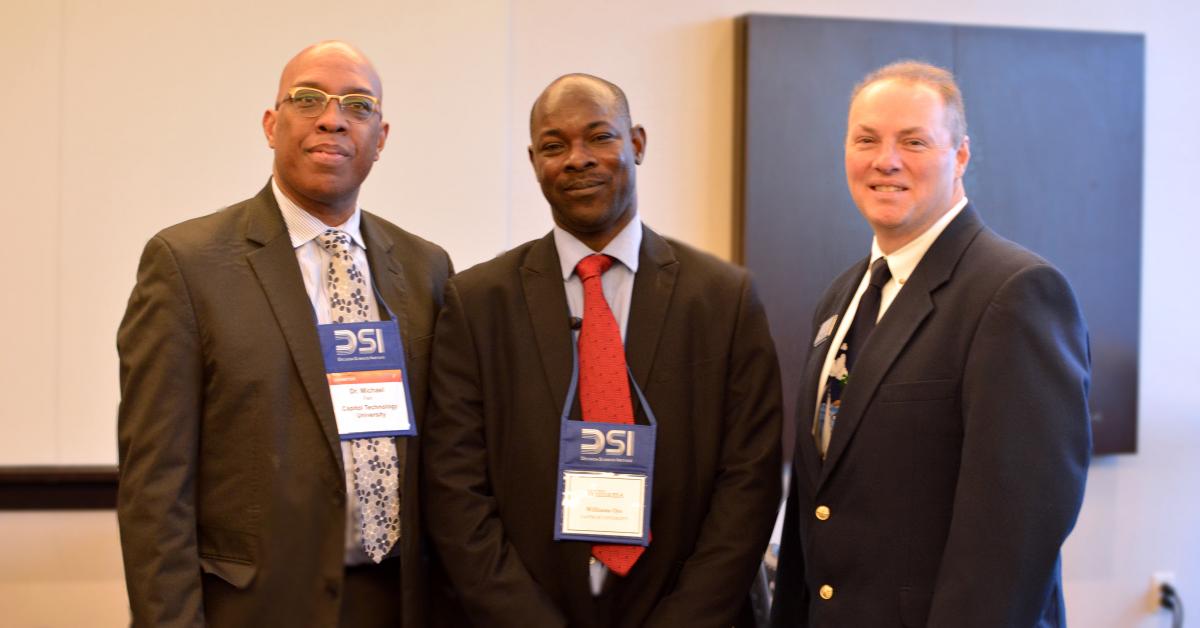When
Typhoon Haiyan struck Southeast Asia in 2013, an estimated 6,300 people
died in the Philippines alone, and millions were displaced. Williams
Ojo, a doctoral student in Capitol Technology University’s PhD program in business analytics and decision sciences,
believes those numbers would have been smaller if relief efforts had
not been hampered by problems with communication and information
management.
 “There
was a gap in terms of trying to identify precisely the number of people
affected and the number of nurses and doctors that needed to be
deployed in specific areas,” recalls Ojo, who served as an World Health
Organization (WHO) information systems management officer in the wake of
the disaster. “I observed that some locations had more doctors and
nurses than needed, while others did not have enough. This was because
of the lack of an integrated database.”
“There
was a gap in terms of trying to identify precisely the number of people
affected and the number of nurses and doctors that needed to be
deployed in specific areas,” recalls Ojo, who served as an World Health
Organization (WHO) information systems management officer in the wake of
the disaster. “I observed that some locations had more doctors and
nurses than needed, while others did not have enough. This was because
of the lack of an integrated database.”
Lessons learned from the Haiyan relief efforts were the subject of Ojo’s presentation to the Decision Sciences Institute (DSI) conference in Washington, DC, held in November. Data analytics and modelling provide tools that can enable resources to be allocated more precisely, Ojo said in his conference paper, Information Management During Disaster Response in Visayas Region of the Philippines: Typhoon Haiyan Experience.
Steps proposed by Ojo include the development of a simulation model that harnesses data from multiple sources, including satellite imagery and census information, to predict the human resources and medical supplies required for a given community.
Children, pregnant women, the disabled, and the elderly all have different sets of needs, and data-driven modelling could allow relief agencies to calibrate their assistance more precisely, he said.
 “If
we have baseline data regarding the population, number of health
facilities, and human resources in a given area, then we can use
modelling to determine the appropriate number of doctors, nurses,
sanitation workers, and other personnel that need to be sent to that
area during an emergency,” Ojo said.
“If
we have baseline data regarding the population, number of health
facilities, and human resources in a given area, then we can use
modelling to determine the appropriate number of doctors, nurses,
sanitation workers, and other personnel that need to be sent to that
area during an emergency,” Ojo said.
As a presenter at the annual Decision Sciences (DSI) Institute conference, Ojo had the opportunity to share his work and exchange ideas with a global community of decision scientists, all attending one of the key professional events in the field. The DSI holds its annual conference each fall at different locations around the world.
Ojo, who began his doctoral studies at Capitol in the spring of 2017, plans further research into the use of analytics and modelling tools as he completes his PhD dissertation in business and analytics, one of three online doctorates available at the university.
Capitol’s doctoral program in cybersecurity, launched in 2010, was the first of its kind and has received successive Center of Excellence designations from the DHS and NSA. In 2014, the university established its PhD program in business analytics and decision sciences, and in 2017 Capitol unveiled a new PhD in technology. For more information about Capitol’s programs, contact gradmit@captechu.edu
 “There
was a gap in terms of trying to identify precisely the number of people
affected and the number of nurses and doctors that needed to be
deployed in specific areas,” recalls Ojo, who served as an World Health
Organization (WHO) information systems management officer in the wake of
the disaster. “I observed that some locations had more doctors and
nurses than needed, while others did not have enough. This was because
of the lack of an integrated database.”
“There
was a gap in terms of trying to identify precisely the number of people
affected and the number of nurses and doctors that needed to be
deployed in specific areas,” recalls Ojo, who served as an World Health
Organization (WHO) information systems management officer in the wake of
the disaster. “I observed that some locations had more doctors and
nurses than needed, while others did not have enough. This was because
of the lack of an integrated database.”Lessons learned from the Haiyan relief efforts were the subject of Ojo’s presentation to the Decision Sciences Institute (DSI) conference in Washington, DC, held in November. Data analytics and modelling provide tools that can enable resources to be allocated more precisely, Ojo said in his conference paper, Information Management During Disaster Response in Visayas Region of the Philippines: Typhoon Haiyan Experience.
Steps proposed by Ojo include the development of a simulation model that harnesses data from multiple sources, including satellite imagery and census information, to predict the human resources and medical supplies required for a given community.
Children, pregnant women, the disabled, and the elderly all have different sets of needs, and data-driven modelling could allow relief agencies to calibrate their assistance more precisely, he said.
 “If
we have baseline data regarding the population, number of health
facilities, and human resources in a given area, then we can use
modelling to determine the appropriate number of doctors, nurses,
sanitation workers, and other personnel that need to be sent to that
area during an emergency,” Ojo said.
“If
we have baseline data regarding the population, number of health
facilities, and human resources in a given area, then we can use
modelling to determine the appropriate number of doctors, nurses,
sanitation workers, and other personnel that need to be sent to that
area during an emergency,” Ojo said.As a presenter at the annual Decision Sciences (DSI) Institute conference, Ojo had the opportunity to share his work and exchange ideas with a global community of decision scientists, all attending one of the key professional events in the field. The DSI holds its annual conference each fall at different locations around the world.
Ojo, who began his doctoral studies at Capitol in the spring of 2017, plans further research into the use of analytics and modelling tools as he completes his PhD dissertation in business and analytics, one of three online doctorates available at the university.
Capitol’s doctoral program in cybersecurity, launched in 2010, was the first of its kind and has received successive Center of Excellence designations from the DHS and NSA. In 2014, the university established its PhD program in business analytics and decision sciences, and in 2017 Capitol unveiled a new PhD in technology. For more information about Capitol’s programs, contact gradmit@captechu.edu
No comments:
Post a Comment